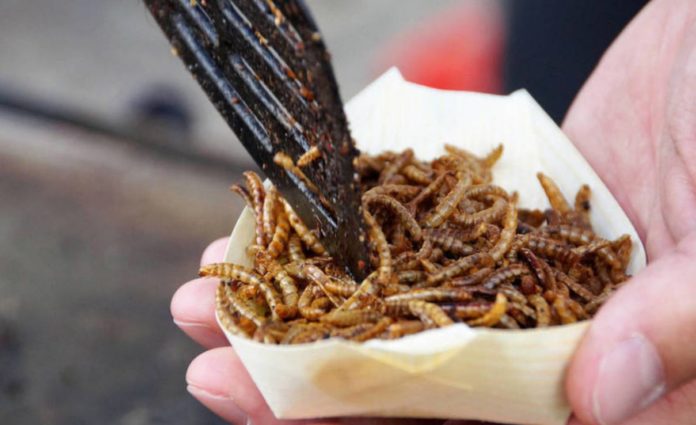A group of experts promotes new changes in food based on biotechnology to address food safety problems after the pandemic. These are their findings
There is still a long way to go to overcome the pandemic and also to face the challenges and opportunities that the crisis has opened in the food sector.
- Does This Mean We Stopped Being Animal and Started Being Human Due to ‘Copy Paste’ Errors?
- The One Lifestyle Choice That Could Reduce Your Heart Disease Risk By More Than 22%
- Aging: This Is What Happens Inside Your Body Right After Exercise
- Immune-Boosting Drink that Mimics Fasting to Reduce Fat – Scientists ‘Were Surprised’ By New Findings
- Gun Violence in America: What They Don’t Talk About at the Debate
Nothing will be as before: projects such as laboratory meat that had not yet taken off could now be a much more plausible alternative and will be incorporated into the diet spurred by the effects of the crisis. It is just one of the changes that we can see in the future. More efficient organic farming without pesticides, the so-called bioactive ingredients …
This week, a group of EU experts has presented the report ‘Resilience and transformation’, on how the pandemic will affect food and more specifically food and agricultural research policy. It details some of the food impacts that have been unleashed as a result of the pandemic. Not surprisingly, 2020 has generated a perfect storm of system-level problems.
For example, after initial and localized disruptions in the food supply, prices started to rise slightly in Europe (2-5% for key products) and more dramatically in some parts of the world (15% in Argentina, almost 20% in Myanmar). There are many factors: the shift from classroom to online classes deprived millions of low-income families of school meals for their children.
Unthinkable alternatives
Additionally, in some sectors of the food industry, workers were unwittingly on the front lines of exposure to the virus. And the impact on the hospitality industry is incalculable: thousands of restaurants have closed, at the same time, the sale of food in grocery stores and online has grown, which in turn has led to a significant reallocation of the food supply with wide consequences economic and social, as the report explains. In short, a new world.
It is, for example, the case of insects, a possibility that has been working for years, but which has not yet caught on due to socio-cultural aspects in many parts of the world. As a possibility, there has been for years ‘in vitro’ or laboratory meat that is obtained from a technique similar to that of skin grafts: muscle cells are selected from animals and allowed to grow. There are already incredibly successful results, but there is still a barrier that is the cost of production. Laboratory meat is still very expensive and that is why it is committed to microbial protein.
Microbial protein
The ‘single-cell proteins’ could be closer than laboratory meat, which would have a final appearance very similar to this. On the other hand, the ‘single-cell protein’ or microbial protein is still microorganisms that have a content high in protein and can be produced on a large scale. The great advantage over meat ‘in vitro’ is that they are relatively easy to industrialize and at an infinitely lower cost than this.
What does it look like for the end consumer? How you can consume? According to experts, “probably as an ingredient, since at the end of the fermentation process it will be possible to obtain a paste that is somehow included in other meals to guarantee an adequate protein intake.”
It would work in a similar way to another of the great bet of the food of the future, which is bioactive ingredients.
- Does This Mean We Stopped Being Animal and Started Being Human Due to ‘Copy Paste’ Errors?
- The One Lifestyle Choice That Could Reduce Your Heart Disease Risk By More Than 22%
- Aging: This Is What Happens Inside Your Body Right After Exercise
- Immune-Boosting Drink that Mimics Fasting to Reduce Fat – Scientists ‘Were Surprised’ By New Findings
- Gun Violence in America: What They Don’t Talk About at the Debate
They are a reality and have been on the supermarket shelves for many years, such as omega 3, fortified milk and other products, but they are still being perfected and introducing new bioactives that are beneficial from the point of view of healthy eating, which they have a positive impact on the health of specific population groups with special needs (elderly people, children, athletes, pregnant women, menopause, hospital or cancer patients …).
Improvement of agriculture
The substitution of conventional pesticides and fertilizers for others of biotechnological origin can help the development of organic or ecological food production, the reduction of CO 2 emissions and even provide solutions to diseases and pests without known treatment.
Biotechnology also contributes to food safety, providing new antimicrobials to fight food pathogens, such as enzymes, bacteriocins, antimicrobial peptides or phages, and their endolysins.
These developments also help fight antimicrobial resistance.
